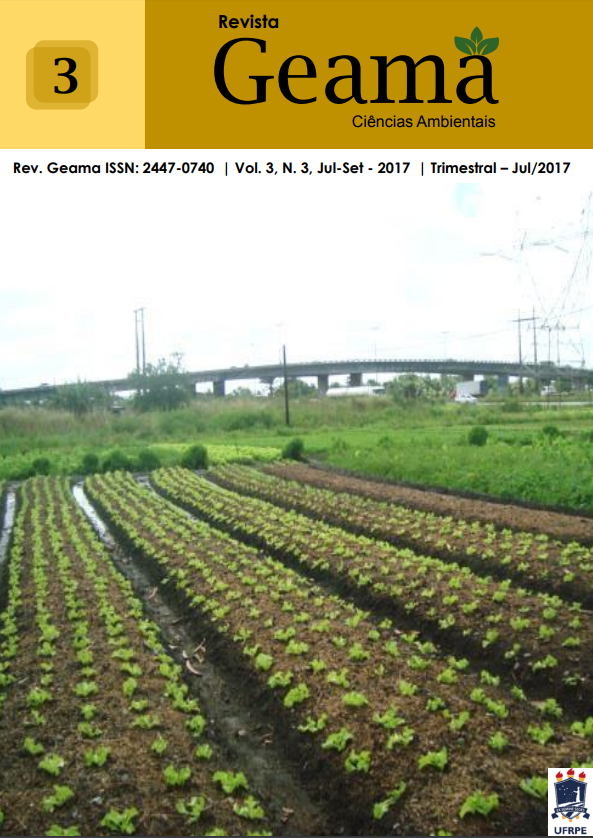Comparison Between Corn Evapotranspiration Rates by the Modified Bowen Ratio and the Ceres-Maize Model
Palavras-chave:
Irrigation, climate, waterResumo
Corn stands out among grains because of its high global importance due to its chemical composition, nutritional value and productive potential. Several factors influence corn crop performance, and climate poses the greatest challenges for crop planning and management. Although tolerant to water deficit, the corn plant presents high sensitivity to water scarcity in specific developmental stages. Therefore, knowing factors related to water loss, namely potential or reference evapotranspiration (ET0) and Evapotranspiration (ETc) is crucial. This work aimed to calculate the ET0 by the methods of Priestley and Taylor (1972) and Penman-Monteith and ETc of the corn crop, both using the CERES-MAIZE model, and compare them with the results observed by the Modified Bowen Ratio method.The field experiment was conducted in the experimental area of ESALQ / USP and sensors were installed for data collection. For the comparison of results, the CERES-MAIZE model, duly calibrated for the experimental conditions, was used. The results showed that ET0 was underestimated by the Penman-Monteith method and overestimated by the Priestley and Taylor method through the CERES-MAIZE model throughout the crop cycle. However, at the cycle end, the accumulated values were lower than those measured by the MBR method.Downloads
Referências
ALLEN, R. G.; PEREIRA, L. S.; RAES, D.; SMITH, M. Crop evapotranspirations: guidelines for computing crop water requirements. Roma: FAO, 1998. 297p. (FAO Irrigation and Drainage Paper, 56).
BERGAMASCHI, H.; DALMAGO, G. A.; COMIRAN, F.; BERGONCI, J. I.; MÜLLER, A. G.; FRANÇA, S.; SANTOS, A. O.; RADIN, B.; BIANCHI, C. A. M.; PEREIRA, P. G. Déficit hídrico e produtividade na cultura do milho. Pesquisa Agropecuária Brasileira, Brasília, v. 41, n. 2, p. 243-249, 2006.
BRAS, R.; CI; SOLO. SIMULAÇÃO DA PRODUÇÃO DE SEDIMENTOS PARA A MICROBACIA HIDROGRÁFICA DO RIBEIRÃO DOS MARINS (SP). v. 27, n. 1, p. 735–741, 2003.
DOORENBOS, J.; KASSAM, A.H. Efeito da água no rendimento das culturas. Campina Grande: UFPB, 1994. 306p. (FAO. Irrigação e drenagem, 33). Tradução de H.R. Gheyi, A.A. de Souza, F.A.V. Damasco, J.F. de Medeiros.
DOURADO-NETO, D. Modelos fitotécnicos referentes à cultura de milho. Piracicaba: ESALQ/USP, 1999. 229p. (Livre Docência).
FANCELLI, A.L. & D. DOURADO-NETO. Produção de Milho. Editora Agropecuária, Guaíba. 360p. 2000.
HOOGENBOOM, G.; JONES, J. W.; WILKENS, P. W.; PORTE, C. H.; BOOTE, K. J.; HUNT, L. A.; SINGH, U.; LIZASO, J. L.; WHITE, J. W.; URYASEV, O.; ROYCE, F. S.; OGOSHI, R.; GIJSMAN, A. J.; TSUJI, G. Y. Decision Support System for Agrotechnology Transfer: version 4.5. Honolulu: University of Hawaii, 2012.
KRESOVIC, et. al. Irrigation as a climate change impact mitigation measure: An agronomic and economic assessment of maize production in Serbia. Agricultural Water Management, v. 139, p. 7–16, 2014. Disponível em: <http://dx.doi.org/10.1016/j.agwat.2014.03.006>
LEITE, H. G.; VALDIR, E.; LIMA DE ANDRADE, C. UM MÉTODO PARA CONDUÇÃO DE INVENTÁRIOS FLORESTAIS SEM O USO DE EQUAÇÕES VOLUMÉTRICAS A METHOD FOR CONDUCTING FOREST INVENTORIES WITHOUT USING VOLUMETRIC EQUATIONS. v. 26, n. 3, p. 321–328, 2002.
MARTINS, F. B. et al. Desenvolvimento foliar em duas cultivares de oliveira estimado por duas categorias de modelos. Revista Brasileira de Meteorologia, v. 29, n. 4, p. 505–514, dez. 2014.
OLIVEIRA, L. A. De. Universidade de São Paulo Escola Superior de Agricultura “ Luiz de Queiroz ” Manejo da irrigação no cultivo da cana-de-açúcar e milho sob cenários futuros : aplicação dos modelos DSSAT / CANEGRO e CERES-MAIZE Luciano Alves de Oliveira Piracicaba. 2015
PAES, Â. et al. UMA REVISÃO ANALÍTICA DA EVAPOTRANSPIRAÇÃO POTENCIAL (1). Bragantia, v. 59, p. 125–137, 2000.
PEREIRA, A.R.; VILLA NOVA, N.A.; SEDIYAMA, G.C. Evapo(transpi)ração. Piracicaba: FEALQ, 1997. 183p.
PEREZ, P. J.; CASTELLVI, F.; IBAÑEZ, M.; ROSELL, J. I. Assessment of reliability of Bowen ratio method for partitioning fluxes. Agricultural and Forest Meteorology, v.97, p.141-150, 1999.
TOJO SOLER, C. M. Uso do modelo Ceres-Maize para previsão de safra do milho “safrinha”. 2004. 146 f. Tese (Doutorado em Agronomia) – Escola Superior de Agricultura Luiz de Queiroz, Piracicaba, 2004.
WILLMOTT, C. J. ON THE VALIDATION OF MODELS. Physical Geography, v. 2, n. 2, p. 184–194, 1 jul. 1981.
Downloads
Publicado
Como Citar
Edição
Seção
Licença
As Políticas Culturais em Revista aplica a Licença Creative Commons Atribuição-Não Comercial 4.0 Internacional (CC BY-NC-SA 4.0) para os trabalhos que publica. Esta licença foi desenvolvida para facilitar o acesso aberto - ou seja, o acesso livre, imediato, e a reutilização irrestrita de trabalhos originais de todos os tipos. Nossos autores mantêm os direitos autorais mas, sob essa licença, concordam em deixar os artigos legalmente disponíveis para reutilização, sem necessidade de permissão ou taxas, para praticamente qualquer finalidade. Qualquer pessoa pode copiar, distribuir ou reutilizar esses artigos, desde que o autor e a fonte original (Políticas Culturais em Revista) sejam devidamente citados.
![]()






